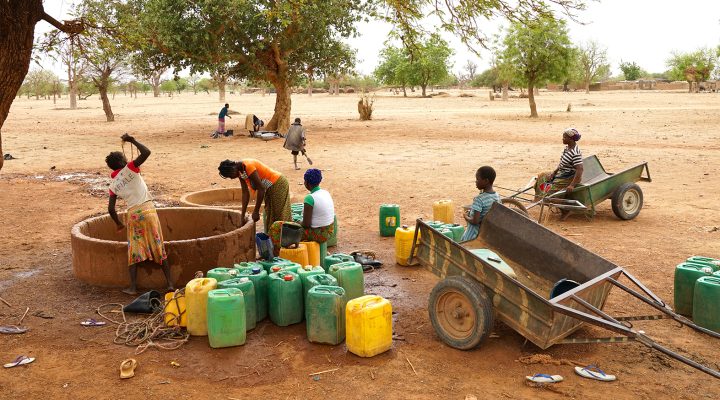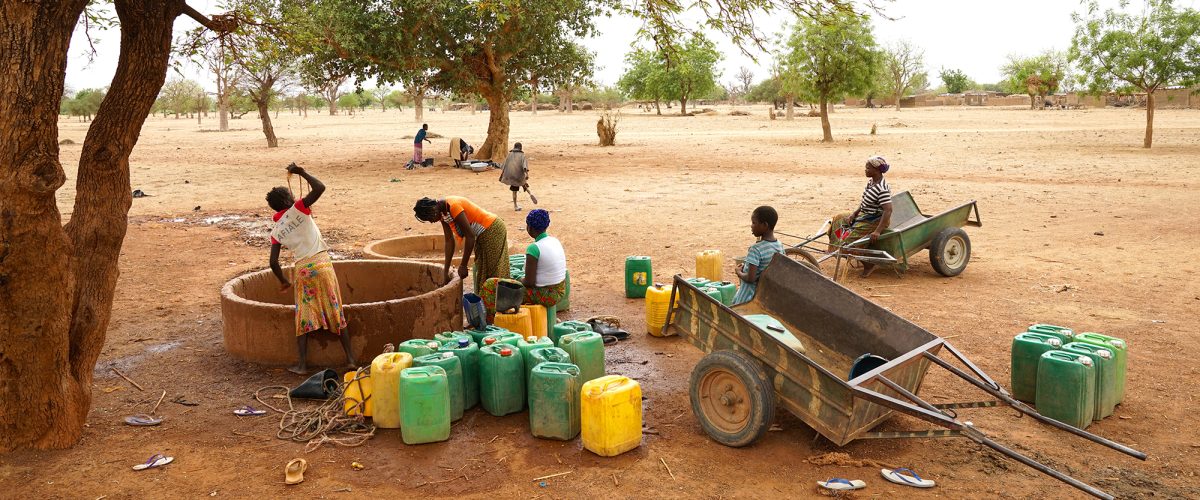In many parts of the world today, two major issues of concern are the rising cost of goods and services, and the scarcity of food.
The inflationary aspect is in part connected to the war in Ukraine and the crisis it has triggered beyond the country. While that is a global concern, the situation is particularly dire across Africa, where harsh climatic conditions and insecurity caused by insurgent and criminal groups have hampered food production as many farmers, fearing for their lives, have stayed away from farms.
Even before things got this bad, World Relief, a Christian non-governmental organization based in Baltimore, has been working to improve the quality of life on the African continent. It currently has offices in seven African countries: Democratic Republic of Congo, Burundi, Rwanda, South Sudan, Malawi, Sudan, and Kenya.
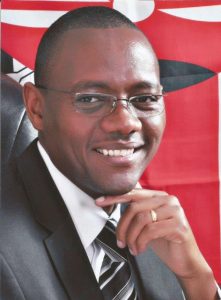
Elias Kamau
Elias Kamau, World Relief country director for Kenya, recently spoke to BNG about his organization’s work in the country considered to be among those most affected by climate change in the horn of Africa. Having lived and worked closely with the rural population in Kenya, Kamau and his team understand the conditions under which many of the people live.
While World Relief is doing its best to boost food production through its agricultural programs and provide other forms of assistance to the people of Kenya, even that work is limited because of the vast terrain of the country.
For example, Turkana County in northeastern Kenya covers 30,000 square miles — about the size of South Carolina. In this primarily agricultural region, global warming has sparked climate change, which has made living extremely difficult.
“Hunger is really biting,” Kamua said. “Earlier in the week, a Turkana woman climbed a tree foraging for wild seeds for her family which they boil for eight hours before they are palatable. She reached out and slipped, fell backward and was stopped by a lower branch. Her back broke, and she died on the tree. This is the extremes the community is being driven to as a coping mechanism to terrible hunger.”
A recent report by UNICEF noted that severe drought, coupled with high cost of food, has worsened food insecurity and hunger in the Horn of Africa. As someone based in the East African country of Kenya, how serious would you rate the problem?
It’s life threatening, very serious … especially in those areas characterized as arid and semi-arid. If you look at the map of the Horn of Africa, with the exception of the Ethiopian highland, the highland in central Kenya, in the regions to the west of Kenya, in the middle part of the Rift Valley, much of the rest of the land throughout the Horn of Africa all the way to the Indian Ocean … is very dry and some of it is characteristic of climate change, especially in northern Kenya and much of Somalia.
We have had successive seasons of failed rains, and that has caused what we are talking about, which has variously been characterized as the worst in the last four decades and food production is at an all-time low.
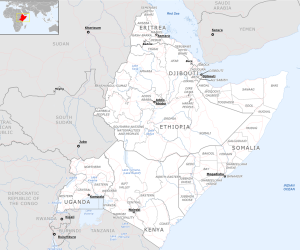
Horn of Africa
UNICEF is right in highlighting the situation as one which is very dire indeed. In some communities in northern Kenya, in the counties of Turkana, Marsabit, Moyale and others like Mandera, some of them are in emergency situation, which means availability of food for human use is very, very poor; there’s huge malnutrition in those areas.
That is in Kenya. If you cross the border and reach Ethiopia, there’s a similar situation of things there, (same as in) Somalia. Somalia is actually worse, with a high malnutrition rate. And the problem in Somalia is compounded by the conflict situation.
So, you have the lack of food, the high malnutrition resulting from that and the security situation with armed groups — the main one being al-Shabab causing a lot of problems to those who would be wanting to distribute food or support communities there.
Does the challenge of armed groups you talked about also affect the work of NGOs like yours?
The organization I work for doesn’t (operate) in places like Somalia at the moment, but I know other organizations we partner with who have operations in those places. For them, if we are talking Somalia, the problem is that access to some of the most vulnerable is hampered by the presence of those armed groups.
The fact that they are in active engagement with government forces and African Union forces, it is unsafe for people to travel to some of those areas to reach the most vulnerable.
The other issue is that, as a result of conflict, people move from places where their lives are threatened to places which they perceive as being more peaceful for themselves. And for that reason, you would find that today, if you flew into a city like Mogadishu in Somalia, or another called Kismayo to the south of Mogadishu near the Kenyan border, you have sprawling Internally Displaced Persons camps all over the place — (people) living in unplanned settlements, just trying their best to be as near as possible to where is considered more peaceful and where they could receive support and assistance from the humanitarian and governing authorities.
“When there is drought, they migrate from one place to the other to look for water and pastures and the few remaining areas that would have some semblance of pastures or water points are hotly contested.”
That is how insecurity in those areas affects delivery of aid and assistance to the people. When you come to places like Kenya, in the northern parts of the country, you have issues of insecurity like cattle rustling. And, of course, … because most of those communities are nomadic pastoralists relying for the most parts on animals for their livelihood, when there is drought, they migrate from one place to the other to look for water and pastures and the few remaining areas that would have some semblance of pastures or water points are hotly contested.
How particularly severe is the drought in Turkana County and do you think it is something to be worried about?
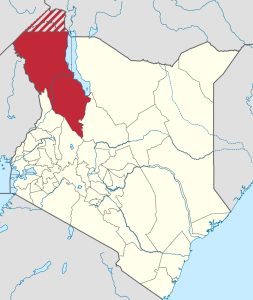
Turkana County, Kenya
World Relief has been operating in northern Kenya and specifically in Turkana County since the year 2011. We moved in there at a time when there was drought. The reason why I think what we are seeing now is a little bit over what we have seen before and why it needs to be given a very special attention, is that in years gone by, we have had, due to climate change, the frequency of drought increasing within these areas. To the point that rainfall patterns are being disturbed. Not just the pattern but the fact of sometimes leading to complete failure in rainfall, leading to drought.
The second factor is that of population growth. You have a number of people living in this area increasing and, of course, the land mass which they occupy is not expanding. So, you have many more mouths to feed on a decreasing resource.
And that factor is (worsened) by conflict. When you have less resources, you fight for them. And when the population is growing, it means you need more food for the people. And then you had the COVID factor. …
“There’s a multiplied impact of catastrophe upon catastrophe.”
So, when you look at it, it is a very dire situation because there’s a multiplied impact of catastrophe upon catastrophe. You had the drought, which is induced by climate change. That’s a big thing already on its own. Then you have conflict happening in the area and then you had COVID.
So you had a situation where even the investments we made in that community over the last 10 years in terms of building their resilience have taken a huge knock. We have gone back several steps in terms of what we had tried to do to build resilience.
What kind of help do you envisage in this scenario?
Over the years, one of the things we have put our effort toward is simply availing greater access to portable water. Given the problem of climate change affecting the population in terms of availability of moisture, increasing the number of water points available in these communities is a great help.
Why? Because there is not much (water beneath the ground due to low rainfall); you have to go down into the ground, build boreholes 250 to 350 meters to get to where you can then pump water to the surface for use by the community members. That we have done. And where we have struck water, we have been able to then come in and assist the communities to expand their livelihood base.
Instead of over-relying on livestock, we have been able to train them on agronomy, establish some small gardens where they can grow some nutritious vegetables and (crops that improve diet) at household level, therefore improving immunity.
That is one thing we are doing that I will really root that many more people help us do. We cannot cover the entire region; it’s too huge. Turkana is 77,000 square kilometers. And just put that in perspective. You can throw in Rwanda and Burundi in Turkana County, and you still have space to spare. It’s that huge.
So the effort of World Relief is important, but more is needed.
“People need food now, not yesterday. They need food now, they are hungry.”
The second thing I think is important is direct food assistance. People need food now, not yesterday. They need food now, they are hungry. There is the shortage of food supplies in part because of the crisis in Europe, the difficulty in importing food from what used to be traditional sources of wheat and grains like Russia and Ukraine. There’s a food shortage.
But having said that, there are (other food) sources, although prohibitively expensive. I was checking last month. A sack of corn which used to go for something like 1,400 Kenyan shillings — that’s about $14 U.S. — was costing over $30 in Turkana.
What are the best ways to get food where it’s needed?
Increasing access to food can be done in a number of ways. One could be bringing food into the community, which I would discourage so as not to disrupt the already existing supply chain in the area. The other could be (providing) vouchers or cash transfers to households so they are able to access food.

LOIYANGALANI, KENYA – JUNE 13: Grass huts and children making fire in el molo tribe village, Turkana lake, Loiyangalani, Kenya on June 13, 2014 in Loiyangalani, Kenya. (Photo by Eric Lafforgue/Art in All of Us/Corbis via Getty Images)
The reason I would root more for vouchers and cash transfers is because there already are markets set up in these areas, there are business people and a road network. So, if we brought food and just distribute it, we might easily drive people out of business. And when the situation normalizes, we would have crashed the market and it would be difficult for those businesses to come back.
Then there’s also the (need for) long-term investment on environmental protection. If we keep on pumping water from beneath and we are not investing in ways of, for example, slowing down soil erosion on the surface, then we are setting ourselves up for disaster. There’s lot of work on environmental rehabilitation that needs to be done.
We cannot do one thing and neglect the other. We have to follow an integrated approach in addressing the crisis in Turkana and other parts of the Horn of Africa. While looking at providing immediate assistance to people who are hungry now, we should look at how we can make communities more resilient, in addition to previous points, looking at renewable energy sources, animal husbandry maybe cross breeding and other interventions.
You are a Kenyan working for a foreign NGO in Kenya. We hear arguments about some foreigners who work in Africa but have little understanding of their work environment. What insight do you bring to your work as an African working for an international NGO in Africa.
I was born and raised in Kenya. I am aware of the challenges and opportunities that exist in my environment. As an organization, we work with local institutions. It is not only that I am privileged that my organization, which as you observed, is an international corporation based out of Baltimore, Md., chose a Kenyan as its country director. Not only that, but all members of my team are also Kenyan.
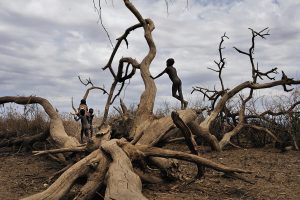
Doctors without Borders staff handle a food distribution and conduct an ambulatory therapeutic feeding program for severely malnourished children in the villages of Karibur and Sesame, in Turkana, Kenya, August 16, 2011. The horn of Africa is suffering one of the worst droughts in years, displacing thousands, and killing others through severe malnutrition. In response to the increasing severity of the situation MSF is operating an emergency nutrition intervention in Turkana. (Photo by Lynsey Addario/Getty Images Reportage)
That does not mean foreigners cannot do the work or make contributions. We have organizations (in Africa that have) foreigners doing well in their own ways. When you look at the way we operate, it is such that we also recruit from the local community. In Turkana, for example, we have agronomists who are members of the Turkana County; we have nutritionist who are from Turkana County, we have got a veterinary assistant from Turkana, and they are working in their own community and what that does is that we are able to bring on board local knowledge.
We are also able to have a greater acceptance as an organization because the community looks at them as part of them, not as a foreign entity. And we also use technology and choose mechanisms (tailored to needs of people). For example, regarding cash transfer (to community members), we utilized the local community leadership to identify the beneficiaries. We called church leaders, members of the national government administration, community leadership. They know who amongst them is worse hit by drought, and they are able to pass on that information. Our selection of beneficiaries is informed by the community members themselves.
Kenya, some days ago, held its presidential election. How would you describe the poll? In the past we saw how post-election disagreements led to violence and death in the country. This time, one of the candidates has chosen to contest the election result in court. What’s your opinion of the election and how will you describe it going forward?
The elections in Kenya were peaceful. Personally, I woke up in the morning that day, went to the polling center. I was processed. There were agents of political parties there observing the whole process. By and large, polling was done successfully. There have been allegations of irregularities. I would leave it to the courts to decide.
Notwithstanding the current food scarcity in many parts of Africa, the continent is known to be well endowed with resources. Some commentators blame the problems in the continent on the quality of leadership. In these days of climate change, if you were to advise on the way forward, what advice would you offer governments across Africa as a way to ensure food security on the African continent?
It is true that Africa is possibly the wealthiest continent on planet earth. And it is also true that in spite of all the wealth, Africans continue to suffer in various ways and to be in need just as is currently the case.
A number of factors have been mentioned and blamed for this state of affairs. Sometimes it has been said to be governance but (there’s no one answer to it). Governance doesn’t happen in isolation, and governance in many African countries has a history to it.
If you look at the DR Congo, that’s a very good example. … There’s poor governance and instability but some of it is foreign instigated.
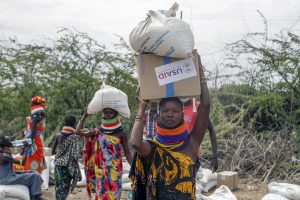
Locals residents carry a boxes and sacks of food distributed by the United States Agency for International Development (USAID), in Kachoda, Turkana area, northern Kenya, Saturday, July 23, 2022. Samantha Power, Administrator of the United States Agency for International Development (USAID) visited Kachoda Saturday with the intention to put measures in place that would help avert a hunger crisis in East Africa. (AP Photo/Desmond Tiro)
One issue we also have to address is the gender issue — the inclusion of women and men together working for the betterment of their communities. Otherwise, sometimes it’s like a boxer who’s fighting with one hand tied behind his back in the sense of how the female gender especially is being left out of our development activities.
And then, there’s the issue of climate change, which I referenced a while ago. … The biggest drivers of global warming, which is the foundation of climate change, is the problem of pollution by the industries. When you look at it, those (responsible for it) are not third world countries. They are not African countries. It is the Western, industrialized countries spewing smoke into the atmosphere that are causing global warming.
The impact is greatly felt in communities which lack the economic resources to adjust themselves. For instance, there’s need to produce more clean energy, yeah. With that we can power our industries and grow our economics.
“Those who are telling us not to mine coal are themselves mining and using coal.”
In Kenya, for example, we have a lot of coal, but we are told we should not mine that coal because it could harm the environment. We understand. But those who are telling us not to mine coal are themselves mining and using coal. China is using coal, U.S. is using coal. In Europe, they use coal. Then they are producing goods and selling to our people at exorbitant prices.
It’s like we have got different classes of citizens: those who are allowed in this world to do as they wish, produce as they wish, sell as they wish, and others who have no right to do the same. That is not fair.
So I would be asking the governments of the world as well, not just in Africa, not to behave as if they can survive the climate catastrophe on their own. It is not possible. We have to look at the problem comprehensively. We have to adopt a fair approach to this issue and be each other’s keeper in solutions we are developing.
Anthony Akaeze is a Nigerian born-freelance journalist who currently lives in Houston. He covers Africa for BNG.

